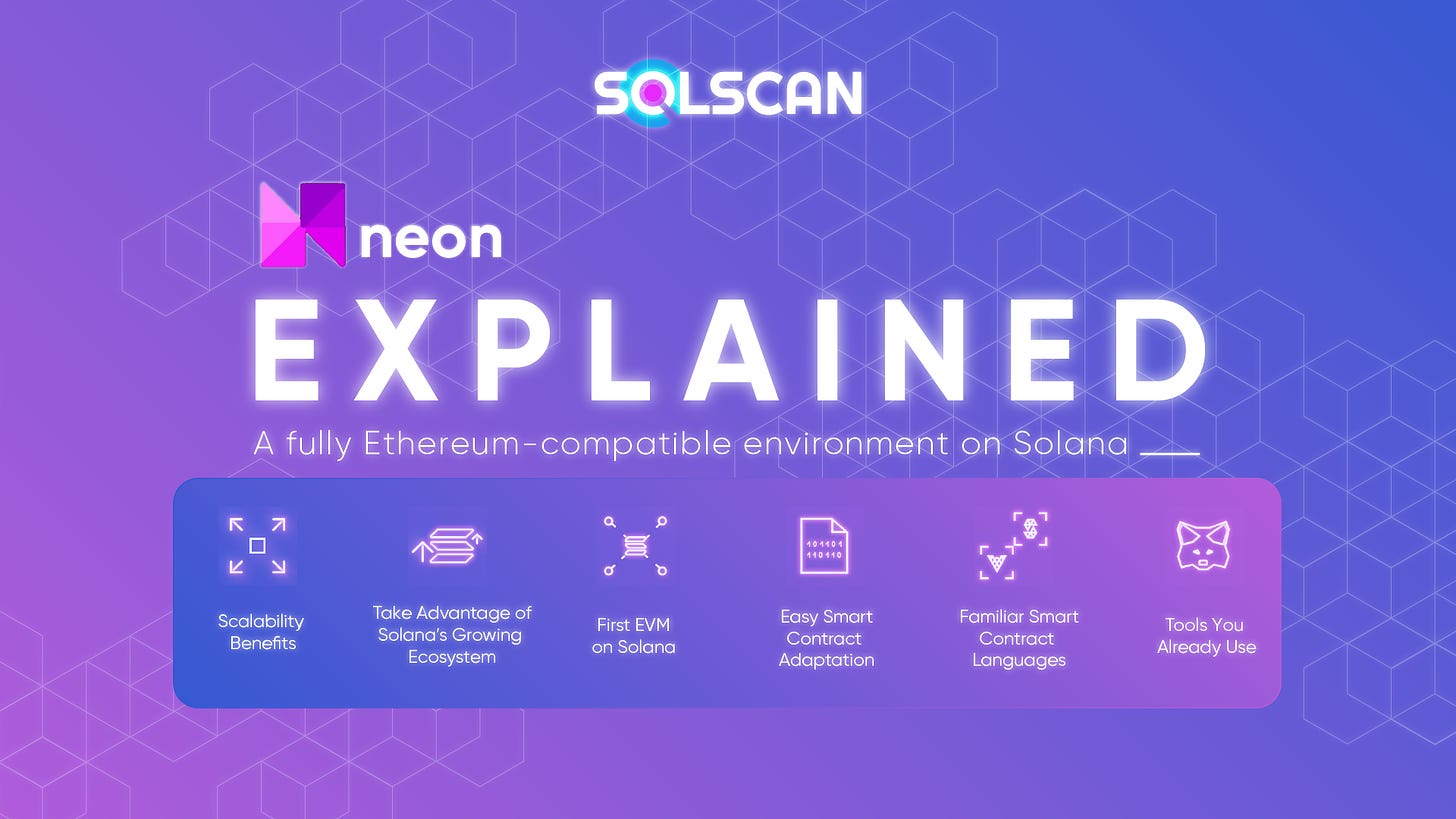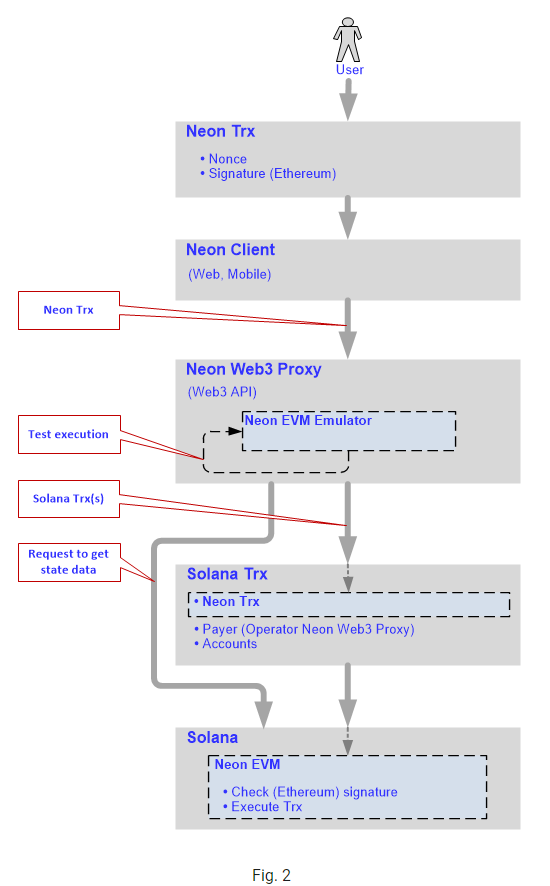Neon EVM: Explained
One of the exciting developments on Solana, besides the new update for QUIC and fee market, is the roll out for Neon EVM, spearheaded by Neon Labs. In this article, we will take a deep dive to understand more about Neon EVM on Solana, and what it aims to achieve.
What is Neon, and what does it solve?
Neon is an EVM-compatible smart contract platform, running native on Solana, making combinations from the best two blockchain in the world, Solana and Ethereum. Neon EVM tool takes full advantage of the Solana’s functionality, allowing for transaction processing with the optimized gas fee, bullet-fast speed, and an incredible throughput. In its vision, Ethereum bluechip Dapps and protocols will be able to be easily deployed on Solana, due to Neon's nature of EVM and native to Solana ecosystem.
This helps solving some major issues among the ecosystems:
1. Solana has the community, sizable liquidity for scale, and advantages for fast transactions and low fees. However, the platform lacks developers, primarily due to technical difficulties in framework/ tooling for Rust.
2. Ethereum has developers, and battle-tested programs, as well as a heavy user base to contribute to open-source development. In a multichain world, they will look for ways to scale, and dominate the landscapes.
Neon EVM is in a prime position to help both ecosystems scale, and allows for great interoperability.
How does Neon work:
Transfer:
Once a transaction is signed by the user, it is sent to the proxy. The Neon transaction is formed based on the rules of Ethereum. The proxy is an account on Solana, that runs the EVM-emulator, and in charge of executing the Neon-txn.
The proxy will request a blockchain state from Solana, and make a test launch of Neon-Txn on Solana state. On the basis of the data received, Proxy forms the new txn according to Solana rules, and sends them, along with packaged data, to Solana for data processing. These include account info, program info, coin balances, and possible account mapping.
Finally, the transactions are sent back to Neon for signature check, according to eth rules, and once verified, is executed on Solana, with parallel execution.
Bridge:
Bridging from Solana to Eth is fairly easy, with the major innovation here being the ERC-20 Token Wrapper. It is a standalone contract, inside the Neon EVM, that allows users to manipulate balance inside SPL tokens.
Once called, the ERC-20 bridge will generate a Solana Token, which represents the corresponding ERC-20 token in SPL contracts. The solana tokens registered in the SPL can be transferred to Solana contracts.
The current landscape:
As of 2021, Neon Lab has raised a 40 Million token sale, from Jump, and Three Arrow Capital. Till the end of 2nd quarter 2022, Neon Lab will begin on-boarding dApps for limited testing, and we will see the roll out of neonPass and NeonSwap later this year.
The basic infrastructure, in terms of partnership, has been built out quietly, including Pyth Network for Oracle use, Graph Protocol for Indexing, and Metamask, for easy on-board of users, and other EVM platforms. NeonScan has also been rolled out and integrated, which should allow for transaction tracking once the ecosystem goes live.
We are excited for the bright future ahead on Solana!





